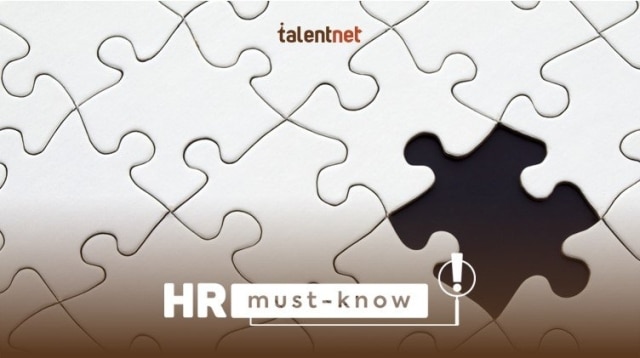Identifying Employee Skill Gaps for Business Success

October 12, 2021
Skills gaps are defined as employees’ lack of required skills to perform their jobs well. This mismatch makes it difficult for employers to find appropriate candidates to fill positions.

For results-oriented companies, it is essential to make the most of employee performance and the skill gaps are the biggest obstacle to achieving business goals. In terms of employee training and development, the most important question is how to identify skill gaps in the workplace.
Why is it important to identify skill gaps?
Identifying skill gaps benefits the company because it can ensure that employees are well trained, knowledgeable, and able to do their jobs better. Some benefits that the skill gap analysis process can bring to your business:
- Identifying the right talents that the firm requires.
- Assisting in the recruitment process since skills gap analysis defines what skills to look for when recruiting new employees
- Pointing out the critical skills that employees need to work on.
- Finding an effective approach for assessing training requirements. An examination of skill gaps will not only identify what skills need to be trained or improved in the short term but also influence your long-term L&D plan.
How to identify employee skill gaps
New challenges related to skill mismatches are emerging. Maintaining a competitive edge demands a workforce equipped with the right skills. Employee skill gaps represent the difference between the skills possessed by the workforce and those required for optimal performance, as well as those needed for future strategic goals.
Leverage data to uncover skill gaps
First, data about employee performance is the right place to start. This step requires data collection to identify competence, performance gaps and core problems that need to be addressed. This step is also useful for discovering training requirements for employees.

Second, it is advisable to make use of numerous data sources to evaluate data, check analytical findings and eventually ratify skills gaps appropriately. A minimum of three sources are the ideal strategy. It not only gives you diverse points of view but also provides you with an alternative choice to use when one source of data goes wrong.
Remember that it’s extremely important to focus on choosing the right data collection approaches to discover shortages in key abilities at work. Inaccurate data or improper methodology might have serious consequences when it comes to training, development and even operational activities of your firm.
Don’t forget to use numerous sources of data for monitoring purposes. The data can be employed to cross-validate data, confirm analytical results, and, finally, appropriately ratify and identify skill shortages. Monitoring its impact can help you determine what’s working and what isn’t so that your business and workers can bring about genuine change and sustainable growth. At the end of the day, that’s what we all want.
If you are still wondering where to start with the skill gap analysis process, contact Talentnet right away! We own a team of experienced consultants willing to help your company identify and address the skill gaps while saving your time and resources.
Conducting skills audits
A comprehensive skills audit is essential for gaining a detailed understanding of the workforce’s existing skill set. This process goes beyond surface-level assessments to identify specific areas where development is needed at both the individual and team levels.
- Employee surveys and feedback: Actively solicit employee input through surveys, focus groups, and individual discussions. This gives employees a voice in identifying their own development needs and helps capture their perceptions of skill gaps within their teams.
- Skills assessments and testing: Implement objective assessments and tests to measure employee proficiency in key areas. This could include anything from technical skills tests to soft skills assessments. These assessments provide concrete data that can be benchmarked against industry standards or internal requirements.
- Job analysis: Conduct a thorough review of job descriptions, performance metrics, and employee feedback. This process helps to clearly define the specific skills required for each role. By comparing these requirements with the skills employees actually possess, organizations can identify gaps with greater precision.
Delving into competency frameworks and skill matrices
Competency frameworks and skill matrices offer a structured, visual approach to skills assessment, providing clarity and facilitating strategic planning. They are powerful tools for aligning talent with business objectives.
- Competency frameworks: These frameworks define the core skills and behaviors necessary for success in different roles and at various levels within the organization. They act as a roadmap for talent development and provide a consistent standard for evaluating employee performance and identifying areas for improvement.
- Skill matrices: These visual tools map employee skills against the competencies required for specific roles or projects. They provide a clear overview of the skills landscape within a team or department, making it easier to identify gaps and make informed decisions about resource allocation, training investments, and talent acquisition.

Implementing analytical methodologies to uncover skill gaps
Beyond basic data analysis, specific analytical techniques can offer deeper insights into the nuances of individual and team skill gaps, enabling more targeted interventions.
Regular performance reviews provide a structured opportunity for managers to assess employee performance and identify areas where skill deficiencies may be hindering progress. Integrating 360-degree feedback into this process provides a more holistic view of employee capabilities.
Directly observing employees as they perform their tasks can identify employee skill gaps that might not be apparent through other methods. This should be followed by specific, actionable feedback to help employees address any identified deficiencies.
Incorporating technology in skill gap identification and management
Technology can significantly streamline the process of identifying and managing skill gaps in the workplace. It brings efficiency, accuracy, and scalability to the process.
- AI-powered skills inference: Leading companies like Johnson & Johnson are leveraging AI to analyze employee data from various sources, including resumes, performance reviews, and learning records. This helps identify current skills, predict future skill needs, and proactively address emerging gaps.
- Learning management systems (LMS): LMS platforms are valuable tools for tracking employee training progress, identifying areas where individuals are struggling, and recommending relevant courses or resources. They enable personalized learning paths tailored to identifying employee skill gaps.
- Talent management software: These solutions assist organizations in identifying high-potential employees, tracking their skills development, and facilitating succession planning. This ensures a pipeline of skilled talent to meet current and future business needs.
Interpreting performance metrics and key performance indicators (KPIs)
Regularly monitoring KPIs is crucial for identifying areas where performance issues might be linked to skill deficiencies.
Look for patterns in metrics related to productivity, efficiency, customer satisfaction, and employee turnover. Changes in these areas can often signal underlying skill gaps. For example, a consistent decline in customer satisfaction scores might indicate a need for improved customer service training.
Compare your organization’s performance metrics to industry benchmarks. This will help you understand how your workforce stacks up against competitors and identify areas where skill gaps might be creating a disadvantage.
If you are still wondering where to start with the skill gap analysis process, contact Talentnet right away! We own a team of experienced consultants willing to help your company identify and address the skill gaps while saving your time and resources.

Solve your HR problems!
6th Floor, Star Building, 33 Mac Dinh Chi, District 1, Ho Chi Minh City, Vietnam

